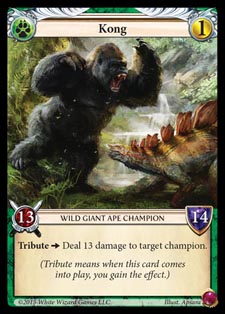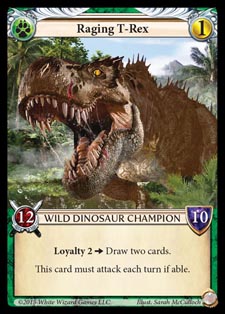As soon as we arrived at the venue, we looked for cube drafts. This was our best opportunity to do so, as there would be eight people together and ready to play as well.
Luckily, we ran across the likes of Sam Black, Michael Majors, and Tom Ross, and they were also interested in cube drafting. The actual draft behaves very similarly to cube in MTG, with a few minor differences. Rare cards (indicated by the red orb on the bottom right of a card) are only present as a singleton in cube, where as common cards (a clear orb), are present in threes. Now, you would think that this would funnel the most powerful cards as singletons. I thought this as well, until I realized how a card like Thought Plucker, widely viewed as one of the most powerful cards in the game in every format, is a common.

This took me by surprise very early, and I quickly realized how important getting the more powerful cards were early, and building around them. My strategy was to get a healthy amount of impactful cards that I can use on my opponent’s turn. This meant prioritizing the Ambush keyword and events. After that, taking zero cost cards was the next important thing, as they are the best forms of filler and are often better than random cards that drew two cards, especially if they were big creatures or disrupted the opponent’s graveyard, as things such as Recycle and reanimation is rampant. Lastly, sprinkling your deck with a few narrow, but high impact cards is good to keep in mind if you can afford it.
I wound up practicing cube as often as I possibly could throughout the day, as it was the only format I hadn’t grinded in my training. This helped me with my overall knowledge of the cards, as well as my game sense, which proved to be a big boon throughout the weekend.
The next day began like any tournament morning. A moderate lack of sleep, mediocre breakfast, and walking into the hall relatively groggy.
I can’t say I missed that part.
I head to the venue and we got ready for the cube portion of the tournament.
Well, everyone else did at least.
My pod was the featured pod, which puts us under the camera. When you’re drafting with Sam Black, Michael Majors, Paul Rietzl, and Matt Sperling, I’d expect it to be featured.

I started my draft pretty rocky, but managed to finish off strong. I had a solid amount of zero cost creatures, but my deck was fairly slow, so I was relying on my spells, which was chock full of removal. Your typical definition of midrange.
Unfortunately, my first opponent, Michael Majors, was the perfect foil to me, sporting a hard control deck with a massive amount of recurring life gain, and an incredible win condition when enough life is amassed. I lost pretty handily in game one, and I knew that I had to come out firing in game two in order to have any shot at winning the match, but I ultimately fell to the mass amount of value, as I ran out of gas and resources. Michael Majors is a very powerful player at any game he plays, so I expected a tough match, but the deck being a complete foil to mine proved too much.

In round two, I ended up surmounting a good midrange game, and grinded out enough value in both games. Unfortunately, neither game was particularly interesting, which is one of the downsides to playing Midrange in cube; cards kind of just get flung at each other if neither player is immediately under the gun, or if both hands aren’t very strong.
Coming out of the cube at 1-1, with everything considered, was really great, and I was excited to start dark drafting. Dark draft was the format I was most confident in, and I hoped to continue the tournament strong.
Anthony has been competing in games for the better part of his adult life and is dedicated to improving his game, improving his community, improving himself as a person, and most importantly having fun and enjoying himself while doing so. You can check out his stream to find out which video game is the latest to catch his attention.

